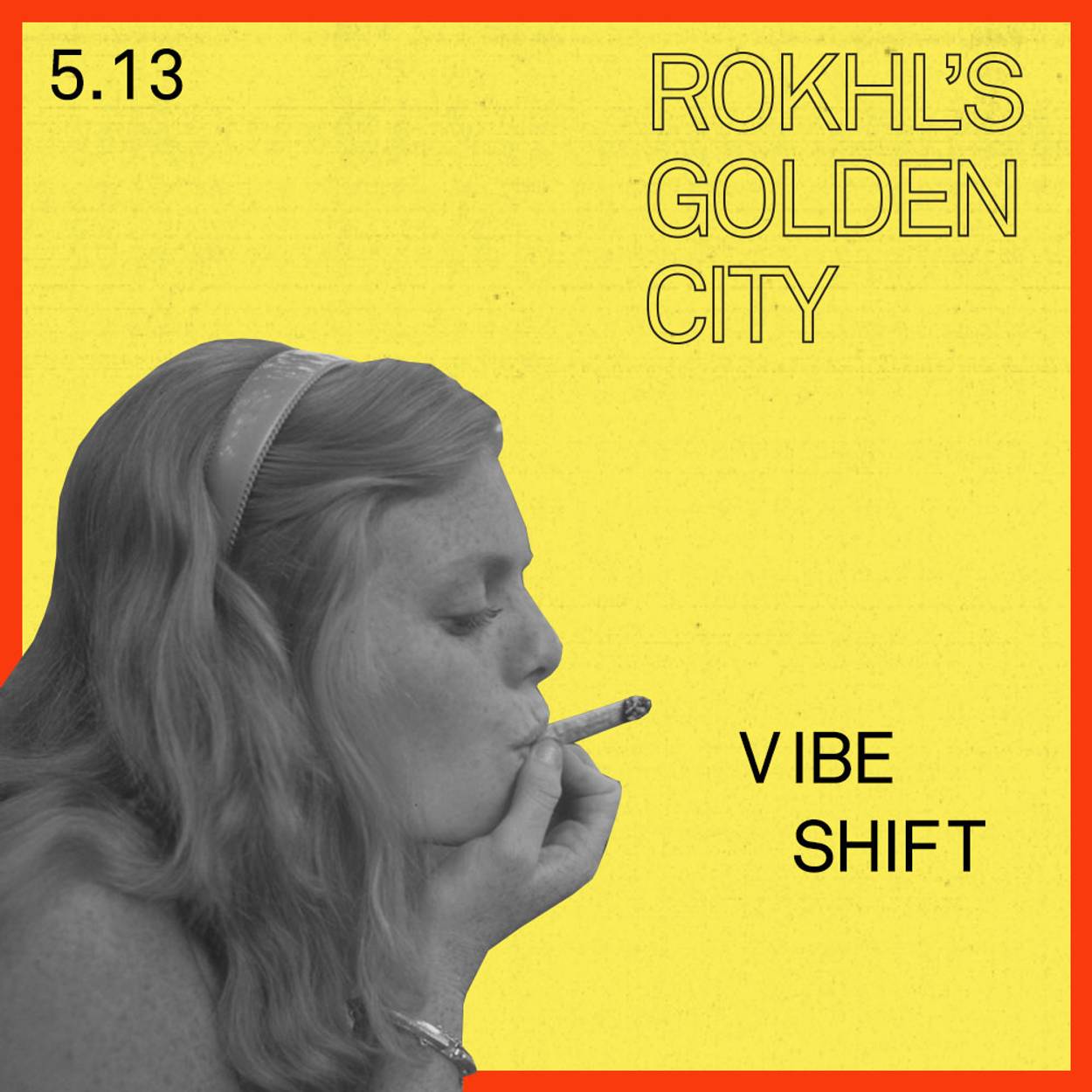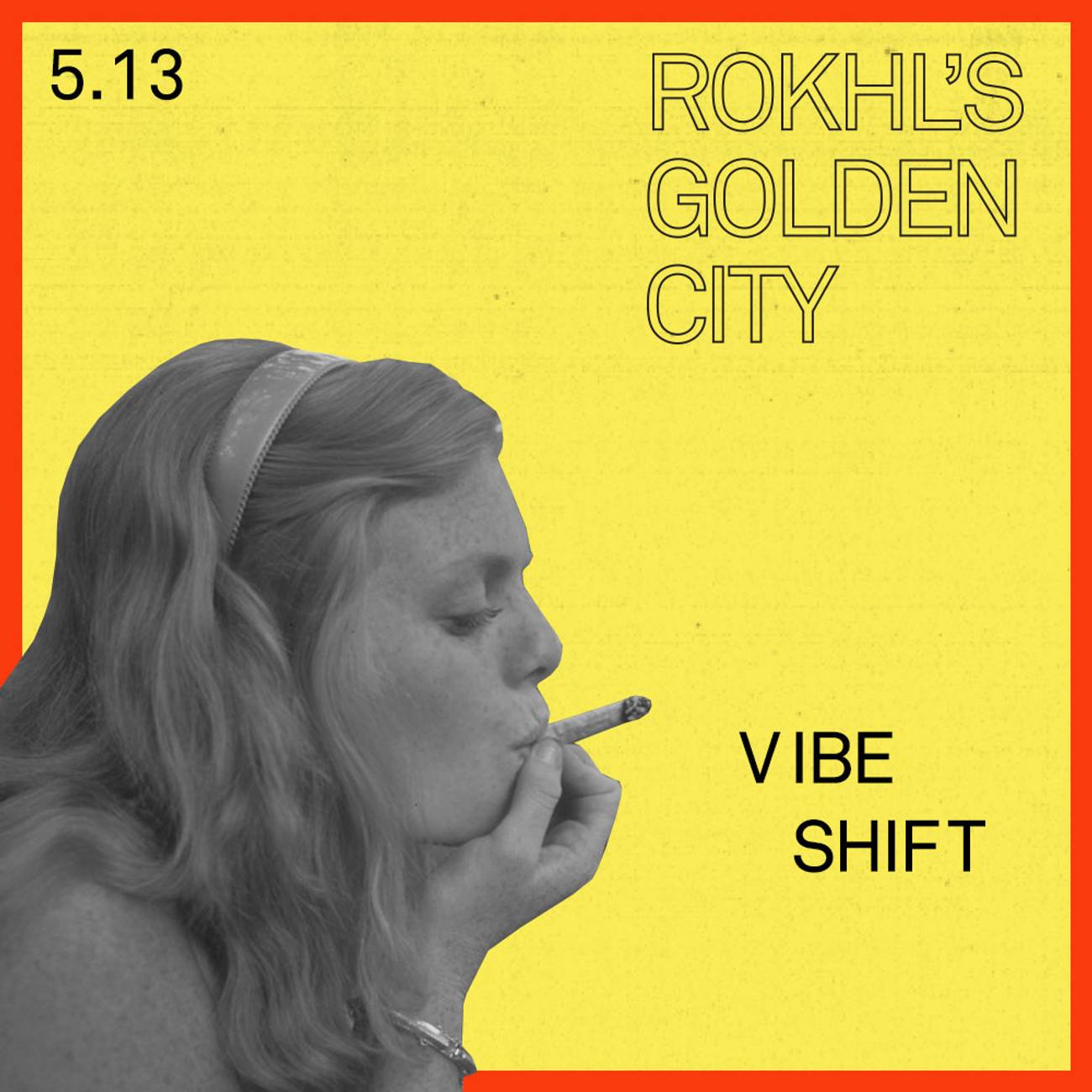Seeing Green
Pulling the Yiddish threads of the cannabis story




Gdy mówisz mi, że kochasz mnie
Twe słowa są, jak opjum ...
When you tell me you love me
Your words are like opium …
—“Opium,” 1933
If you’re a regular reader of this column, you know that interwar Poland is a place I return to often, whether through its theater, scholarship, or song. “Opium” was the kind of song you might’ve heard in the Warsaw cabarets of that era. Here, opium wasn’t merely the metaphorical intoxicant dealt between lovers. Opium was, along with cocaine, one of the drugs of choice among Polish artists and bohemians of the time; in the countryside, meanwhile, people drank cheap but potent ether.
In an essay on Stanisław Ignacy Witkiewicz, an avant-garde artist and narcotics enthusiast, literary historian Juliette Bretan notes that in interwar Poland, “despite official condemnation, drugs—soft and hard—were substantially intertwined with everyday culture.” Witkiewicz was an artist-writer-provocateur whose drug use was as much a part of his art as brush and canvas. In 1932, he published a book of essays on drugs and drug use called Narkotyki (Narcotics). On sketches made for painted portraits, he included a code at the bottom, denoting which drugs had been used in the process. That list included tobacco, alcohol, cocaine, morphine, and even peyote imported from Mexico. The list of substances ingested by Witkiewicz would put William Burroughs to shame. Even so, cannabis was nowhere to be found.
Similarly, in Walter Benjamin’s Berlin, prescription cocaine and morphine partied alongside alcohol and tobacco as recreational drugs of choice. When Benjamin began his literary-scientific “experiments” with cannabis in 1927, it was still mainly used in medical preparations, not yet attaining the kind of popularity it had among certain groups in the United States.
So it’s not so surprising that when Eddy Portnoy went looking in the YIVO archive for historical cannabis-related material in Yiddish, he came up almost completely empty-handed. As director of exhibitions, he was working on what would become the recently opened Am Yisrael High: The Story of Jews and Cannabis, YIVO’s first on-site exhibit since the pandemic began.
When YIVO was first established in 1925, its collection mandate was appropriately broad for the “first central repository for material on Yiddish-speaking Jewry.” If Jews had taken up cannabis as a recreational drug, there would inevitably be at least some evidence of it in the archives. When I talked to Portnoy recently, I asked him about the possibility that those in charge might’ve avoided collecting materials related to recreational drug and alcohol use, perhaps as a matter of respectability. He scoffed at the idea. First of all, the archive did indeed collect material connected to alcohol, such as wine bottles and labels. And second, it’s hard to imagine a guiding sense of propriety which would exclude anything related to cannabis use, but allow for the inclusion of, say, the erotic Yiddish stories now held in the archive. While cannabis was certainly a plant that thrived in Eastern Europe, its early 20th-century applications were largely textile-industrial. When it came to cannabis, the bottom line was make rope, not dope.
That’s not to say that the archive holds nothing at the intersection of Yiddish and recreational cannabis. Among the many artefacts on display, you can find anarchist Rudolf Rocker’s Yiddish translation of a 1911 German fantasy novel called Hashish. But beyond any one item, what’s remarkable is that with Am Yisrael High, Portnoy has returned YIVO’s collection mandate all the way back to its expansive interwar roots, acquiring, among other things, a glass bong menorah and marijuana-themed Seder plate, pieces that speak to a very particular moment in contemporary American Jewish culture.
The interwar archive focused on documenting Eastern European Jewish life in its broadest sense, as Portnoy explained. Once the archive moved to the United States, however, the focus narrowed to collecting Yiddish-language culture as well as material related to more “official” American Jewish life. In the postwar era, YIVO didn’t have the same kind of mandate for broadly collecting the material culture of Ashkenazi American Jews. As Am Yisrael High amply demonstrates, American Jews have been absolutely critical to the research, popularization, and legalization efforts around cannabis. Some of them did so more as Americans, some specifically as highly identified American Jews. But their cumulative presence and impact is an important phenomenon that has mostly escaped archival attention. Until now.
One of the things I’ve missed most during these long pandemic years has been face-to-face socializing at YIVO events. In all that time, I never dreamed that our grand return to in-person schmoozing would feature an elderly Jew handing out free joints in front of the Center for Jewish History.
Not just any elderly Jew, mind you, but A.J. Weberman: yippie, conspiracy theorist, pot delivery pioneer, and famed Dylan garbologist. The opening of Am Yisrael High fell on a perfectly crisp, early May evening and the crowd outside the Center for Jewish History was in a friendly, party mood, helped along by the surreal sight of Weberman handing out “Glatt Pot”-branded joints like it was shabes morning and he was your synagogue’s least wholesome candyman.
Once inside, I sat with a bloc of Yiddishists among a decidedly un-Yiddishist crowd. I looked around in wonderment at all the unfamiliar, untroubled faces, folks who had come to celebrate cannabis but had probably never heard of the Lubyanka Prison or what happened in its basement. As the opening panel started, my friend Sorele Chiritescu turned to me and said, “This is a whole vibe shift.”
It may not have been the vibe shift I was expecting, but maybe it was the vibe shift we deserved. Almost exactly a year ago, I took to this digital space to celebrate New York state legislation decriminalizing marijuana and expunging the records of those charged with marijuana-related offenses. It’s been a year and while New York hasn’t exactly leapt into the Stoned Age, it is at least making baby steps toward an infrastructure of statewide authorized growers and dispensaries. And, yeah, YIVO now sells branded pot-related swag, possibly the coolest merch ever produced by an archive.
Last year I also marked the publication of Ashkenazi Herbalism, a new chapter in English-language scholarship on Eastern European medicinal plant knowledge. Out of curiosity, I emailed co-author Deatra Cohen to ask about the place of cannabis in Ashkenazi herbal healing. She directed me to one of the most famous 18th-century medical texts, Tobias Cohn’s Ma’aseh Toviyyah. Cohn is a fascinating character who was raised in Poland, but whose work took him from Krakow to Padua to the court of five consecutive sultans to whom he served as physician. In Ma’aseh Toviyyah, Cohn recommends cannabis oil in a formula for treating syphilis.
OK, maybe syphilis ointment is a little too gnarly for a lighthearted exhibit like Am Yisrael High. But there are still a couple threads of the Yiddish-cannabis story waiting to be pulled. In the late 1990s, the Klezmatics commissioned Michael Wex to write a Yiddish song about smoking pot, which he called “Shir Lehanef.” It’s probably the first recorded instance of the diminutive splifele (a little spliff or joint).
When “Shir Lehanef” was released in 1997, it was the first time I had ever heard of jazz clarinetist Mezz Mezzrow, whom the song refers to as der magid fun mez-mezritch. This is a very Wexian play on the actual Magid (preacher) of Mezritch, a disciple of the Baal Shem Tov. Mezz Mezzrow, on the other hand, was a middling jazz clarinetist who began his musical career in 1920s Chicago. Mezzrow gets a significant shout-out in Am Yisrael High for his other career distinction: being the man “responsible for introducing high-quality marijuana to Harlem’s jazz scene.”
In his 1946 memoir Really the Blues, Mezzrow describes his own introduction to “marihuana” in the early 1920s. It’s at a Midwestern bar, the kind where drinks are served by a Yiddish-speaking cowboy packing pearl-handled pistols. One night, a bar regular named Patrick takes it upon himself to teach young Mezzrow how to smoke a joint. In the memoir Mezzrow describes what those first experiences were like: “All of a sudden the world is stripped of its dirty gray shrouds and becomes one big bellyful of giggles.” Under the influence of weed, “you still see what you saw before but in a different, more tolerant way, through rose-colored glasses.”
By 1930, Mezzrow was living in Harlem. There he happened to meet a supplier of the best Mexican golden-leaf. Overnight, Mezzrow became a local supplier and the most popular man in Harlem.
Almost at the exact same time that Mezz Mezzrow was introduced to marijuana, a young Yiddish poet named Yitskhok Berliner arrived in Mexico from Poland. Both men born in 1899, their destinies were tied to Mexico in dramatically different ways.
Berliner would publish what is probably the only Yiddish poem about marijuana, aptly called, “Marijuana.” Even though Mexico outlawed cannabis cultivation and sale in 1920, it was both a popular export as well as a domestic problem. Mezzrow was a New Yorker rejoicing in Mexican weed, which he claimed tasted like chocolate. Berliner actually lived in Mexico, among many of its poorest inhabitants. As Eli Rosenblatt writes, the speaker of Berliner’s poetry was “an expressionist voice in spiritual crisis. He is a tormented, simple Jew who—having become European exactly as he departed the continent for Mexico—reluctantly improvised a persona sensitive to the severe social disparities of his new home.”
Where Mezzrow celebrated the “rose-colored glasses” bestowed by the cannabis experience, Berliner despaired at the way marijuana seemingly enslaved the user:
The man smokes marijuana
A narcotic.
The dream-effect places him in a harness
Instead of feeling the muddy earth beneath him, he imagines a divan caressing his feet. Instead of hungry children begging, he hears only singing.
It smokes a man, that marijuana.
Narcotic.
He’s harnessed to the divan.
upon the earth, which is filthy.
As a kid who lived through the hysterical stupidity of 1980s anti-drug campaigns, I can’t help reflexively raising a skeptical eyebrow at Berliner’s dour portrayal of marijuana. Isn’t our ire better pointed at systemic inequities fueling the need for escapism? Nonetheless, our joyful new era of legal, accessible weed is unfolding at the same time as a third, miserable pandemic year. Even vibe shifts come with strings attached. As the demand for escapism continues to rise, it may still be worth our time to take off the rose-colored glasses from time to time and listen to the earnest Yiddish poets among us.
SEE: Am Yisrael High is at the Center for Jewish History, 15 E. 16th St. in Manhattan, through December.
ALSO: Last year I talked about the short stories of Jonah Rosenfeld, once marginalized by the tastemakers of the Yiddish press, now collected and translated in a new volume. On June 9, translator Rachel Mines will talk about her work on Rosenfeld’s stories, in conversation with the Yiddish Book Center. Register here … YIDSTOCK is coming back this summer with in-person performances, and the lineup looks great. Tickets will sell out, so get yours now. At the Yiddish Book Center, Amherst, Massachusetts, July 7-10 … My friend Yuriy Gurzhy—musician, DJ, record collector extraordinaire—just released a new compilation of Jewish music to raise funds for aid to Ukraine. Rusishe krigshif, shif zikh in dr’erd (Yiddish: Russian warship, go to hell) “is a selection of 29 compositions by Jewish artists from around the world who are appalled by Russia’s brutal war against Ukraine and its citizens. Some of them live in Ukraine, some have their family roots there.” I bought the album as soon as it was released. It’s got a fantastic lineup of artists and lots of great new Yiddish tracks. Proceeds go to volunteer paramedics in Ukraine. Buy and download now.
Rokhl Kafrissen is a New York-based cultural critic and playwright.